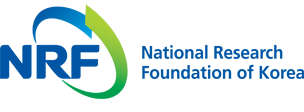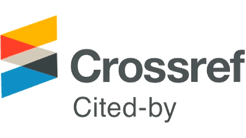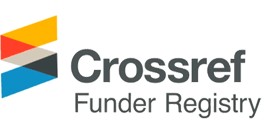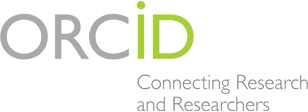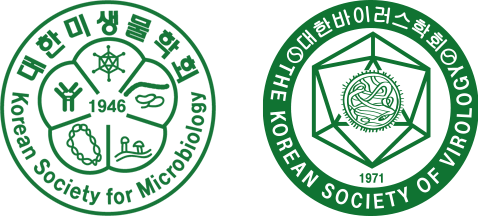Original Article
Euzeby JP. List of Bacterial Names with Standing in Nomenclature: a folder available on the Internet. Int J Syst Bacteriol. 1997;47(2):590-592.
10.1099/00207713-47-2-5909103655Gopalaswamy R, Shanmugam S, Mondal R, Subbian S. Of tuberculosis and non-tuberculous mycobacterial infections - a comparative analysis of epidemiology, diagnosis and treatment. J Biomed Sci. 2020;27(1):74.
10.1186/s12929-020-00667-632552732PMC7297667Chopra S, Matsuyama K, Hutson C, Madrid P. Identification of antimicrobial activity among FDA-approved drugs for combating Mycobacterium abscessus and Mycobacterium chelonae. J Antimicrob Chemother. 2011;66(7):1533-1536.
10.1093/jac/dkr15421486854Lopeman RC, Harrison J, Desai M, Cox JAG. Mycobacterium abscessus: Environmental Bacterium Turned Clinical Nightmare. Microorganisms. 2019;7(3):90.
10.3390/microorganisms703009030909391PMC6463083Huh HJ, Kim SY, Shim HJ, Kim DH, Yoo IY, Kang OK, et al. GenoType NTM-DR performance evaluation for identification of Mycobacterium avium complex and Mycobacterium abscessus and determination of clarithromycin and amikacin resistance. J Clin Microbiol. 2019;57(8):e00516-19.
10.1128/JCM.00516-1931167842PMC6663903Ruth MM, Sangen JJN, Remmers K, Pennings LJ, Svensson E, Aarnoutse RE, et al. A bedaquiline/clofazimine combination regimen might add activity to the treatment of clinically relevant non-tuberculous mycobacteria. J Antimicrob Chemother. 2019;74(4):935-943.
10.1093/jac/dky52630649327Griffith DE, Aksamit T, Brown-Elliott BA, Catanzaro A, Daley C, Gordin F, et al. An official ATS/IDSA statement: diagnosis, treatment, and prevention of nontuberculous mycobacterial diseases. Am J Respir Crit Care Med. 2007;175(4):367-416.
10.1164/rccm.200604-571ST17277290Gilljam M, Schersten H, Silverborn M, Jonsson B, Ericsson Hollsing A. Lung transplantation in patients with cystic fibrosis and Mycobacterium abscessus infection. J Cyst Fibros. 2010;9(4):272-276.
10.1016/j.jcf.2010.03.00820400381Taylor JL, Palmer SM. Mycobacterium abscessus chest wall and pulmonary infection in a cystic fibrosis lung transplant recipient. J Heart Lung Transplant. 2006;25(8):985-988.
10.1016/j.healun.2006.04.00316890122Kaiser JC, Heinrichs DE. Branching Out: Alterations in Bacterial Physiology and Virulence Due to Branched-Chain Amino Acid Deprivation. mBio. 2018;9(5): e01188-18..
10.1128/mBio.01188-1830181248PMC6123439Thiour-Mauprivez C, Martin-Laurent F, Calvayrac C, Barthelmebs. Effects of herbicide on non-target microorganisms: towards a new class of biomarkers? Sci Total Environ. 2019;684:314-325.
10.1016/j.scitotenv.2019.05.23031153078Choi KJ, Yu YG, Hahn HG, Choi J-D, Yoon MY. Characterization of acetohydroxyacid synthase from Mycobacterium tuberculosis and the identification of its new inhibitor from the screening of a chemical library. FEBS Lett. 2005;579(21):4903-4910.
10.1016/j.febslet.2005.07.05516111681Garcia MD, Nouwens A, Lonhienne TG, Guddat LW. Comprehensive understanding of acetohydroxyacid synthase inhibition by different herbicide families. Proc Natl Acad Sci U S A. 2017;114(7):E1091-E1100.
10.1073/pnas.161614211428137884PMC5321015Gokhale K, Tilak B. Mechanisms of bacterial acetohydroxyacid synthase (AHAS) and specific inhibitors of Mycobacterium tuberculosis AHAS as potential drug candidates against tuberculosis. Curr Drug Targets. 2015;16(7):689-699.
10.2174/138945011666615041611554725882218Amorim Franco TM, Hegde S, Blanchard JS. Chemical Mechanism of the Branched-Chain Aminotransferase IlvE from Mycobacterium tuberculosis. Biochemistry. 2016;55(45):6295-6303.
10.1021/acs.biochem.6b0092827780341Wang D, Zhu X, Cui C, Dong M, Jiang H, Li Z, et al. Discovery of novel acetohydroxyacid synthase inhibitors as active agents against Mycobacterium tuberculosis by virtual screening and bioassay. J Chem Inf Model. 2013;53(2):343-353.
10.1021/ci300454523316686Grandoni JA, Marta PT, Schloss JV. Inhibitors of branched-chain amino acid biosynthesis as potential antituberculosis agents. J Antimicrob Chemother. 1998;42(4):475-482.
10.1093/jac/42.4.4759818746Cho SN, Choi JA, Lee J, Son SH, Lee SA, Nguyen TD, et al. Ang II-Induced Hypertension Exacerbates the Pathogenesis of Tuberculosis. Cells. 2021;10(9):2478.
10.3390/cells1009247834572127PMC8465031Lee J, Choi JA, Cho SN, Son SH, Song CH. Mitofusin 2-Deficiency Suppresses Mycobacterium tuberculosis Survival in Macrophages. Cells. 2019;8(11):1355.
10.3390/cells811135531671648PMC6912353Nguyen TD, Choi JA, Lim HJ, Chae CH, Lee J, Son SH, et al. Inhibitors of acetohydroxyacid synthase as promising agents against non-tuberculous mycobacterial diseases. J Antibiot. 2025;78(3):181-189.
10.1038/s41429-024-00799-z39672903Choi JA, Cho SN, Lee J, Son SH, Nguyen DT, Lee SA, et al. Lipocalin 2 regulates expression of MHC class I molecules in Mycobacterium tuberculosis-infected dendritic cells via ROS production. Cell Biosci. 2021;11(1):175.
10.1186/s13578-021-00686-234563261PMC8466733Sohn H, Lee KS, Ko YK, Ryu JW, Woo JC, Koo DW, et al. In vitro and ex vivo activity of new derivatives of acetohydroxyacid synthase inhibitors against Mycobacterium tuberculosis and non-tuberculous mycobacteria. Int J Antimicrob Agents. 2008;31(6):567-571.
10.1016/j.ijantimicag.2008.01.01618337064Zohar Y, Einav M, Chipman DM, Barak Z. Acetohydroxyacid synthase from Mycobacterium avium and its inhibition by sulfonylureas and imidazolinones. Biochim Biophys Acta. 2003;1649(1):97-105.
10.1016/S1570-9639(03)00160-2Choi KJ, Noh KM, Kim DE, Ha BH, Kim EE, Yoon MY. Identification of the catalytic subunit of acetohydroxyacid synthase in Haemophilus influenzae and its potent inhibitors. Arch Biochem Biophys. 2007;466(1):24-30.
10.1016/j.abb.2007.07.01117718999Lim WM, Baig IJ, La IJ, Choi JD, Kim DE, Kim SK, et al. Cloning, characterization and evaluation of potent inhibitors of Shigella sonnei acetohydroxyacid synthase catalytic subunit. Biochim Biophys Acta. 2011;1814(12):1825-1831.
10.1016/j.bbapap.2011.09.00722015678Choi KJ, Yu YG, Hahn HG, Choi JD, Yoon MY. Characterization of acetohydroxyacid synthase from Mycobacterium tuberculosis and the identification of its new inhibitor from the screening of a chemical library. FEBS Lett. 2005;579(21):4903-4910.
10.1016/j.febslet.2005.07.05516111681Gesbert G, Ramond E, Tros F, Dairou J, Frapy E, Barel M, et al. Importance of branched-chain amino acid utilization in Francisella intracellular adaptation. Infect Immun. 2015;83(1):173-183.
10.1128/IAI.02579-1425332124PMC4288867Gokhale K, Tilak B. Mechanisms of bacterial acetohydroxyacid synthase (AHAS) and specific inhibitors of Mycobacterium tuberculosis AHAS as potential drug candidates against tuberculosis. Curr Drug Targets. 2015;16(7):689-699.
10.2174/138945011666615041611554725882218Liu YK, Kuo HC, Lai CH, Chou CC. Single amino acid utilization for bacterial categorization. Sci Rep. 2020;10(1):12686.
10.1038/s41598-020-69686-532728059PMC7391690Boigegrain RA, Liautard JP, Kohler S. Targeting of the virulence factor acetohydroxyacid synthase by sulfonylureas results in inhibition of intramacrophagic multiplication of Brucella suis. Antimicrob Agents Chemother. 2005;49(9):3922-3925.
10.1128/AAC.49.9.3922-3925.200516127072PMC1195390Ibrahim HS, Eldehna WM, Abdel-Aziz HA, Elaasser MM, Abdel-Aziz MM. Improvement of antibacterial activity of some sulfa drugs through linkage to certain phthalazin-1(2H)-one scaffolds. Eur J Med Chem. 2014;85:480-486.
10.1016/j.ejmech.2014.08.01625113876Capasso C, Supuran CT. Sulfa and trimethoprim-like drugs - antimetabolites acting as carbonic anhydrase, dihydropteroate synthase and dihydrofolate reductase inhibitors. J Enzyme Inhib Med Chem. 2014;29(3):379-387.
10.3109/14756366.2013.78742223627736Bouissane L, El Kazzouli S, Leonce S, Pfeiffer B, Rakib EM, Khouili M, et al. Synthesis and biological evaluation of N-(7-indazolyl)benzenesulfonamide derivatives as potent cell cycle inhibitors. Bioorg Med Chem. 2006;14(4):1078-1088.
10.1016/j.bmc.2005.09.03716274996Camoutsis C, Geronikaki A, Ciric A, Sokovic M, Zoumpoulakis P, Zervou M. Sulfonamide-1,2,4-thiadiazole derivatives as antifungal and antibacterial agents: synthesis, biological evaluation, lipophilicity, and conformational studies. Chem Pharm Bull (Tokyo). 2010;58(2):160-167.
10.1248/cpb.58.16020118573Scarim CB, Chelucci RC, Dos Santos JL, Chin CM. The use of Sulfonamide Derivatives in the Treatment of Trypanosomatid Parasites including Trypanosoma cruzi, Trypanosoma brucei, and Leishmania ssp. Med Chem. 2020;16(1):24-38.
10.2174/157340641566619062014110931218962Chibale K, Haupt H, Kendrick H, Yardley V, Saravanamuthu A, Fairlamb AH, et al. Antiprotozoal and cytotoxicity evaluation of sulfonamide and urea analogues of quinacrine. Bioorg Med Chem Lett. 2001;11(19):2655-2657.
10.1016/S0960-894X(01)00528-511551771- Publisher :The Korean Society for Microbiology and The Korean Society of Virology
- Publisher(Ko) :대한미생물학회‧대한바이러스학회
- Journal Title :JOURNAL OF BACTERIOLOGY AND VIROLOGY
- Volume : 55
- No :1
- Pages :69-78
- Received Date : 2025-03-12
- Revised Date : 2025-03-21
- Accepted Date : 2025-03-25
- DOI :https://doi.org/10.4167/jbv.2025.55.1.069



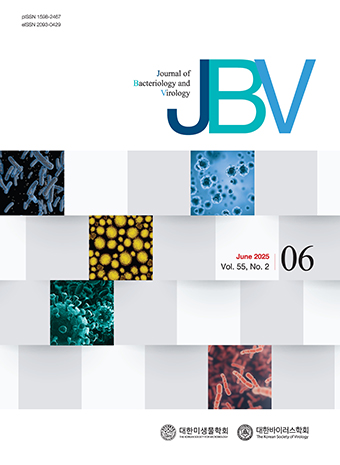 JOURNAL OF BACTERIOLOGY AND VIROLOGY
JOURNAL OF BACTERIOLOGY AND VIROLOGY
